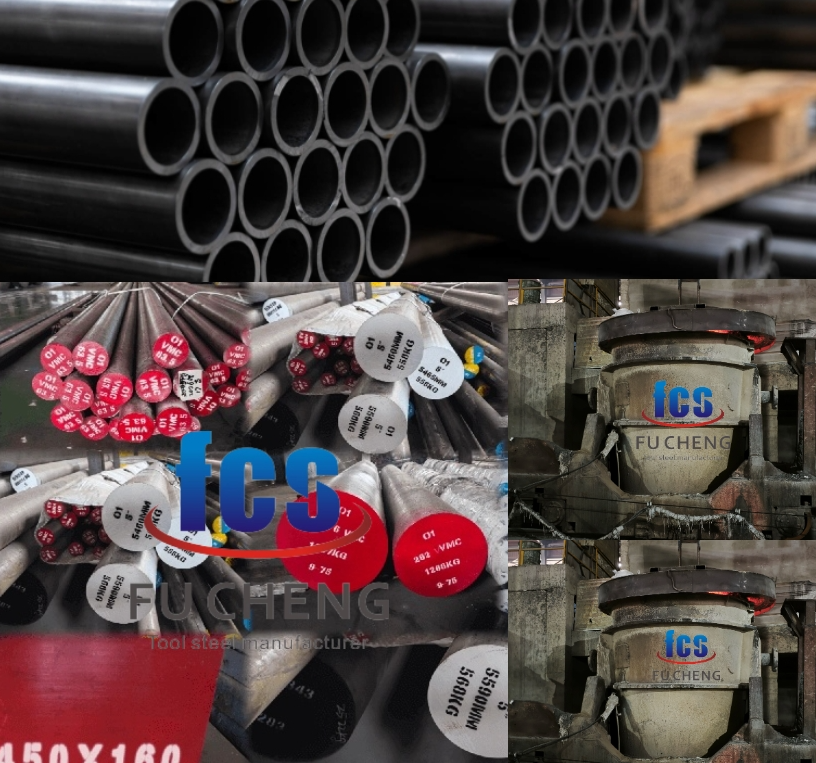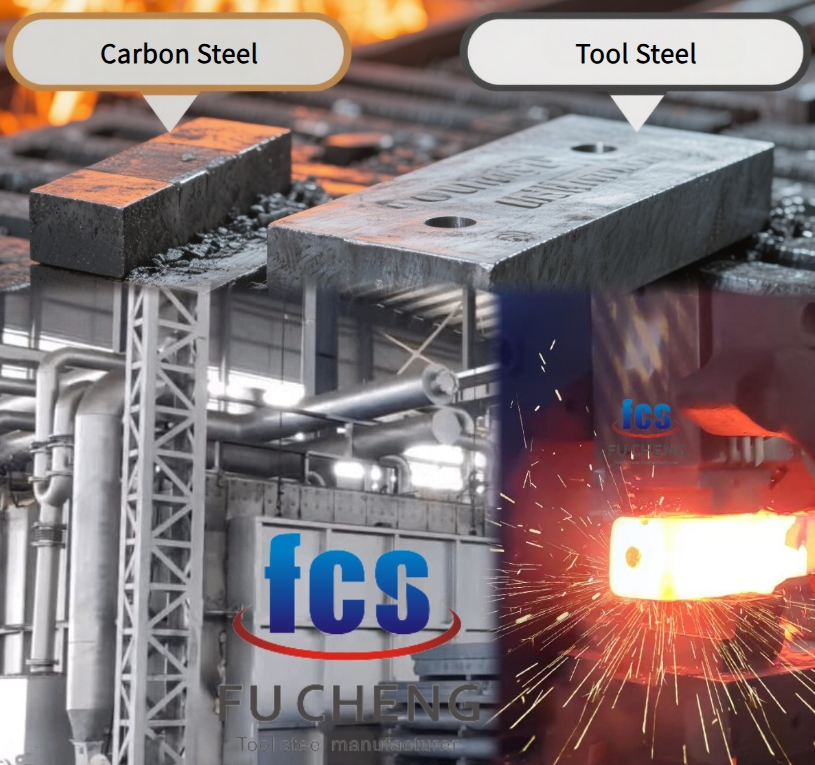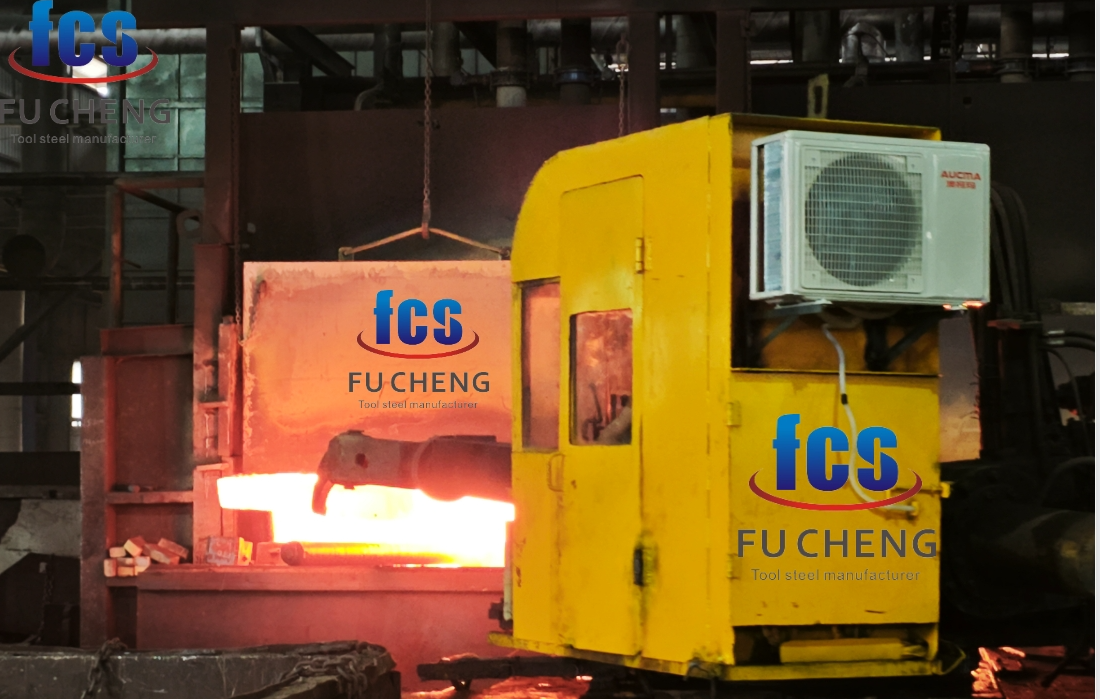I often wonder why some tools handle intense heat, staying sharp and tough, while others just don’t last. From my experience, it’s all about how the steel gets treated. Carbon steel requires one type of heat treatment. Tool steel needs a different process because its makeup is unique. These specific treatments match what the steel is made of and how we plan to use it. Think about methods like annealing, which can make steel softer, or tempering, which adjusts hardness and toughness. These treatments define the steel’s durability and how well it performs its job. So, what separates these heat treatment methods? And why is understanding this important for choosing the right tool?
The heat treatment processes for carbon steel and tool steel differ significantly due to their compositional and performance requirements. The following comparative analysis covers composition characteristics, heat treatment objectives, specific processes, and applications.
Differences in Composition and Performance Requirements
| Item | Carbon Steel | Tool Steel |
|---|---|---|
| Carbon Content | 0.05%–1.3% (strengthened primarily by carbon) | 0.6%–2.3% (high carbon, strengthened with alloying elements) |
| Alloying Elements | Trace Mn, Si (few or no alloying elements) | Contains Cr, W, V, Mo, Co, etc. (forms carbides to enhance hardness, wear resistance, and red hardness) |
| Core Performance | Balanced mechanical properties (strength, toughness, plasticity) | High hardness, wear resistance, and red hardness (maintains hardness at high temperatures) |
Comparison of Heat Treatment Objectives

Carbon Steel:Adjust the balance of hardness, strength, and toughness; eliminate internal stress; improve machinability (e.g., cutting performance); suitable for structural components (gears, shafts, bolts, etc.).
Tool Steel:Maximize hardness, wear resistance, and red hardness; control microstructure (e.g., refine carbides, reduce retained austenite); suitable for high-precision tools such as cutting tools, dies, and gauges.
Key Heat Treatment Process Comparisons
1. Annealing
Carbon Steel
Full Annealing (heated above Ac3, cooled with the furnace): Softens the material, eliminates stress, refines grains, and improves machinability (mostly used for low-to-medium carbon steels).
Spheroidizing Annealing (only for high-carbon steels like T10): Spheroidizes carbides, reduces hardness (e.g., from 200 HB to 150 HB), and facilitates subsequent processing.
Tool Steel
Spheroidizing Annealing (mandatory step): High-carbon tool steels (e.g., W18Cr4V high-speed steel) require long-term low-temperature (750–800°C) annealing to spheroidize network carbides, prevent quenching cracks, and improve machinability.
Stress Relieving Annealing: Eliminates stress after processing (e.g., forging, cold forming) to prevent deformation.
2. Normalizing
Carbon Steel:Heated above Ac3 (hypoeutectoid steel) or Accm (hypereutectoid steel), air-cooled to refine grains and increase hardness (10–15 HB higher than annealing); used for preparatory heat treatment or direct application (e.g., common structural components).
Tool Steel:Rarely used alone; often serves as pre-treatment before annealing (e.g., breaking up network carbides to prepare for spheroidizing annealing).
3. Quenching
| Quenching Aspect | Carbon Steel | Tool Steel |
|---|---|---|
| Heating Temperature | Hypoeutectoid steel: (Ac3 + 30–50°C); Hypereutectoid steel: (Ac1 + 30–50°C, retaining some undissolved carbides to improve wear resistance). |
Much higher than carbon steel. For example, W18Cr4V high – speed steel is quenched at 1280°C to dissolve alloy carbides and improve hardenability and red hardness. |
| Cooling Media | Water (for low – carbon steel, for rapid cooling); Oil (for high – carbon steel, to reduce cracking). It has poor hardenability (cores of workpieces >10 mm in diameter are difficult to harden). |
Oil, molten salt (step quenching), or air cooling. Some high – alloy steels like Cr12MoV have excellent hardenability and can harden via air cooling, which helps reduce deformation and cracking. |
| Risk/Process Feature | High – carbon steels (e.g., T12) are prone to cracking due to stress concentration during quenching. The cooling rate must be controlled. | Poor thermal conductivity requires stepwise heating (e.g., preheating to 500–600°C before raising to quenching temperature) to avoid thermal stress. |
4. Tempering
| Tempering Type | Carbon Steel | Tool Steel |
|---|---|---|
| Low-Temperature Tempering | 150–250°C: Decomposes martensite, retains high hardness (58–62 HRC); applied to cutting tools and gauges. (Drawback: Poor red hardness—hardness significantly decreases above 200°C.) |
150–200°C: Reduces retained austenite and increases hardness (e.g., Cr12MoV cold work die steel achieves 58–62 HRC after tempering). |
| Medium-Temperature Tempering | 350–500°C: Forms troostite structure, providing optimal elasticity (35–45 HRC); used for manufacturing springs. | 350–500°C: Seldom used unless specific toughness is required (not a standard treatment for most tool steel applications). |
| High-Temperature Tempering | 500–650°C: Forms sorbite structure, yielding balanced mechanical properties (20–35 HRC); applied to gears and shafts via “quenching and tempering” (调质处理) to achieve 综合力学性能 (integrated strength, toughness, and plasticity). | – |
| Secondary Hardening Tempering | – | 500–650°C (critical for high-speed steels like W18Cr4V): – Precipitation of alloy carbides (e.g., W₂C, VC) causes “secondary hardening,” where hardness increases to 63–66 HRC (instead of decreasing). – Requires three tempering cycles with cooling to room temperature between cycles to eliminate retained austenite and ensure red hardness (maintains ≥55 HRC at 600°C). |
Comparison of Typical Microstructures and Properties
| Process | Carbon Steel (e.g., 45 steel) | Tool Steel (e.g., W18Cr4V) |
|---|---|---|
| Post-Quenching Microstructure | Martensite + trace retained austenite | Martensite + abundant alloy carbides + retained austenite |
| Post-Tempering Microstructure | Tempered martensite (low temp), tempered troostite (medium temp), tempered sorbite (high temp) | Tempered martensite + dispersed alloy carbides (secondary hardening) |
| Hardness Range | 15–62 HRC (varies with tempering temperature) | 55–66 HRC (dependent on secondary hardening) |
| Red Hardness | Poor (significant hardness drop above 200°C) | Excellent (maintains ≥55 HRC at 600°C) |
Summary of Core Differences
1.Influence of Alloying Elements
Cr, W, V, etc., in tool steel improve hardenability and red hardness, allowing quenching with lower cooling rates and producing secondary hardening during tempering; carbon steel relies solely on carbon content, with lower performance limits.
2.Process Complexity
Tool steel requires precise temperature control (e.g., stepwise heating, salt bath heating) and multiple tempering cycles (to eliminate retained austenite), while carbon steel processes are relatively simple.
3.Application-Driven Goals
Carbon steel heat treatment focuses on “balanced performance,” while tool steel aims for “extreme hardness and wear resistance,” especially stability at high temperatures.
Application Examples
Carbon Steel: Quenching and high-temperature tempering (tempering treatment) of 45 steel for gears; quenching and low-temperature tempering of T10 steel for hand tools (high hardness but poor red hardness, suitable for room-temperature cutting).
Tool Steel: W18Cr4V high-speed steel quenched at 1280°C and tempered three times at 560°C for milling cutters and drill bits (maintains sharpness during high-speed cutting); Cr12MoV cold work die steel quenched and low-temperature tempered for stamping dies (high wear resistance).
Expert Opinion:
“Based on my experience working with metal processes for over twenty years, I can say the difference in heat treating carbon and tool steels is basic to modern materials engineering. I find it amazing how changes to the metal’s tiny internal structure during heat treatment affect its real-world performance. For example, consider secondary hardening in high-speed tool steels. This isn’t just interesting science. It is why a cutting tool keeps its sharp edge even when it gets hot enough to make the material being cut glow red. Carefully controlling heating and cooling changes how the atoms line up inside the steel. In my view, this careful process makes top-quality tools different from standard ones. I believe when manufacturers invest in the right heat treatment steps, they are doing more than just completing a production task. They are building the performance features that will define that tool’s abilities for its entire working life.”
———— Dr. James Harrington , Senior Metallurgist with 25 years of experience in industrial tool development and Professor of Materials Science at Carnegie Technical Institute
summary
In my experience, knowing about different heat treatments for steel is really useful. It’s practical knowledge for anyone who uses steel tools. I’ve learned that picking the right tool means knowing how the maker created it. For example, I might pick a carbon steel wrench for basic repairs. Its heat treatment makes it suitable for that. Or, I might need a tool steel drill bit for very exact work. Its specific heat treatment allows it to perform that precise task well. I get good results because of these tailored heat treatments. I think understanding the science behind making steel helps me choose smarter. I know which tools I can count on for my toughest jobs. The right heat treatment truly matters.



